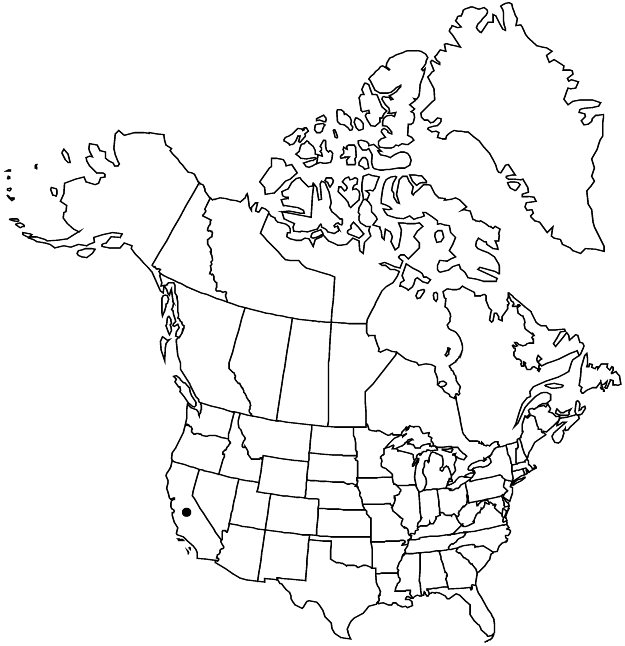Eriogonum nortonii
Pittonia 2: 165. 1891.
Herbs, spreading, 0.5–2 dm, glabrous, usually reddish. Stems: aerial flowering-stems prostrate to ascending or weakly erect, 0.1–0.3 dm, glabrous. Leaves basal and cauline; basal: petiole 1–3 cm, tomentose, blade round to reniform, 0.5–1.5 × 0.5–1.5 cm, densely white-tomentose abaxially, subglabrous or glabrous and green adaxially; cauline: petiole and blade similar to basal leaves. Inflorescences cymose, not distally uniparous due to suppression of secondary branches, open, 4–18 × 10–30 cm; branches glabrous; bracts 1–2 × 1–2 mm. Peduncles absent. Involucres terminal at tips of slender branchlets proximally, not appressed to branches, broadly turbinate, 3–4 × 2.5–3.5 mm, glabrous; teeth 6–8, erect, 0.4–0.8 mm. Flowers 1–2 mm; perianth white to rose, glabrous; tepals monomorphic, obovate; stamens included, 1–1.5 mm; filaments glabrous. Achenes light-brown, 3-gonous, 1–1.3 mm.
Phenology: Flowering May–Aug.
Habitat: Sandy to gravelly slopes, mixed grassland and chaparral communities, oak and pine woodlands
Elevation: 300-1200 m
Distribution

Calif.
Discussion
Of conservation concern.
Eriogonum nortonii is a rare and localized species restricted to the Gabilan Range of Monterey and San Benito counties, from Fremont Peak south to The Pinnacles. It is confined largely to two protected areas, the Hastings Natural History State Reservation and the Pinnacles National Monument. A disjunct population is found southeast of Carmel Highlands in the Santa Lucia Mountains of Monterey County.
Selected References
None.
Lower Taxa
"narrowing" is not a number."dm" is not declared as a valid unit of measurement for this property.